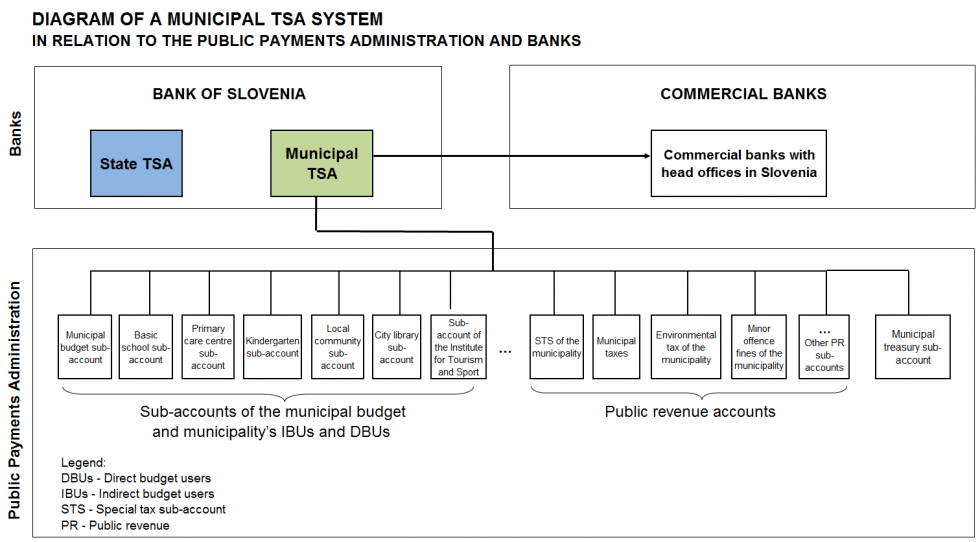Managing cash resources of the state treasury single account
The treasury single account system in Slovenia
The system was established in 2002. It allows the cash resources of all public sector entities to be gathered in one account in the central bank. Specific to the Slovenian management system is that it has separate sub-systems at the state level and at the level of each municipality. The deciding factor in determining which system (state or municipal) an entity belongs to was the entity’s founding characteristics. A municipality has the option to close its treasury single account and, together with all its entities, join the treasury single account at the state level.The system was established in 2002. It allows the cash resources of all public sector entities to be gathered in one account in the central bank. Specific to the Slovenian management system is that it has separate sub-systems at the state level and at the level of each municipality. The deciding factor in determining which system (state or municipal) an entity belongs to was the entity’s founding characteristics. A municipality has the option to close its treasury single account and, together with all its entities, join the treasury single account at the state level.
The main objectives and advantages of a treasury single account system are:
- to gather public sector cash resources in one account, which provides an effective overview of the cash resources of public entities and ensures the effective management of all cash resources of the public sector as a whole;
- to consolidate cash resources, which reduces the costs of borrowing and increases the revenue for investments while maintaining minimum liquidity reserves; liquidity surpluses and deficits are consolidated within the system so that liquidity needs of individual entities are met and the remaining cash resources is deposited outside the system; this does not mean that the management of financial plans of budget users is centralised because all budget users independently decide on the use of resources in their financial plan;
- to ensure immediate information on and availability of public revenue received (resources are seen in the treasury single account and are not kept in a multitude of bank accounts) and the immediate overview of expenditure and other outflows;
- to reduce transaction costs for payments within the public sector and to have uniform information support for effecting payments provided by one payment transaction provider; that is, the Public Payments Administration.
The state treasury single account system is linked to three environments. Payment transactions among budget users included in the state treasury single account system are carried out within the environment of the Public Payments Administration. These are internal payment transactions. Payment transactions with external entities are carried out via the environment of the Bank of Slovenia, where the state treasury single account is also kept. The environment of commercial banks is also important because liquidity surpluses in the system is deposited in commercial banks and funds are borrowed from them in the event of deficits.
Like the state treasury single account system, the municipal treasury single account system is also linked to three environments. Payment transactions among budget users included in the municipality’s treasury single account system are carried out within the environment of the Public Payments Administration. These are internal payment transactions. Payment transactions with external entities are carried out via the environment of the Bank of Slovenia, where the municipal treasury single account is also kept. The environment of commercial banks is also important because liquidity surpluses in the system is deposited in commercial banks and funds are borrowed from them in the event of deficits.



